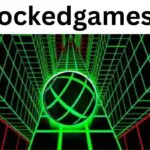A rubik’s cube is a puzzle that features nine colored squares. Its solution involves twisting the pieces so that each side returns to its original color. There are 43 quintillion different possible combinations, but only one correct answer.
There are many algorithms for solving the cube, but speedcubers typically use CFOP, or Fridrich method. This includes solving the cross, F2L, and orienting and permuting the last layer.
Origins
The puzzle was invented by Hungarian sculptor and professor of architecture Erno Rubik in 1974. He designed and built a wooden prototype of the cube, consisting of 27 blocks connected by elastic bands. He had originally intended it to be a teaching tool for his students, but soon became entranced with its challenge. It took him a month to solve, and soon it was a worldwide phenomenon. There are 43 quintillion possible ways the pieces can be rearranged.
In 1976, Japanese ironworks owner Terutoshi Ishigi filed a patent application for an almost identical mechanism.[1] Nonetheless, Rubik’s invention was the more popular, and received a trademark in Hungary on 30 January 1975 (HU170062).
Tibor Laczi convinced Rubik to allow him to take the cube to international toy fairs. It was at one of these that Ideal Toy Company executive Tom Kremer spotted it and gave it its name, the Rubik’s Cube. Rubik sold the patent rights to the puzzle to Ideal Toy Company in 1980, and since then more than 450 million have been produced.
Functions
There are over 43 quintillion possible combinations of coloured sides on the cube. The cube is solved by twisting the outer edges to align their coloured centres with the central ones. Each twist consists of a quarter-turn of the face on which it appears (F, R, U, D or L). A sequence of the correct moves will eventually return the cube to its solved state.
Aside from learning a few algorithms to solve the cube, regular cubing also develops quick reflexes. This is useful for typing on computers, texting on telephones, and even avoiding accidents. Hobby Inspired reports that people who regularly cube also have stronger joints and better vision than those who don’t.
Erno Rubik was born in Budapest, Hungary in 1944. He combined his father’s talents as an engineer who designed gliders and mother’s skills as a sculptor. He also worked as a professor and was fascinated by three-dimensional geometry. He created the Cube as a way to introduce his students to the concept of space.
Variations
While the original mechanical 3x3x3 cube remains popular, many variations have been created. Some have varying degrees of difficulty, and others feature different mechanisms. These puzzles are great for people of all ages and abilities, and they can be used to sharpen problem-solving skills or compete with friends.
Hungarian sculptor and professor Erno Rubik designed his Cube to demonstrate how three-dimensional objects worked, but he didn’t intend it to be a game. The Cube contains movable independent parts that can be repositioned without the structure falling apart.
The basic principle of the Rubik’s Cube is that each center cubie should have a single color. The rest of the centers should be evenly distributed on the edges and corners. This imposes a few restrictions on the movement of edge cubies. Adding inner layer rotations to the puzzle solves some of these problems and increases the number of possible positions for each edge cubie. This is illustrated in the following graphs.
Challenges
Lucas Etter first picked up a Rubik’s Cube as a way to pass the time at his grandparents’ retirement home. Now he’s a “speedcuber,” using memorized sequences or algorithms to solve the puzzle in seconds. He’s one of millions of people who have been enthralled by the iconic puzzle that was invented in the early 1980s.
The cube has an estimated 43 quintillion combinations, but only one solution. It’s a testament to the genius of its inventor, Erno Rubik, who forged his career as a professor, sculptor and architect while embracing the power of self-teaching.
His work has been a catalyst for an emerging sport that teaches strategy, memorization and logistics. It develops concentration and persistence, and it improves visual-spatial intelligence. It also promotes a sense of accomplishment that has broad implications in education. Educators are now experimenting with connected Rubik’s Cubes to develop logical thinking in students of all ages. They’re also incorporating the puzzle into curriculum.






Comments closed.